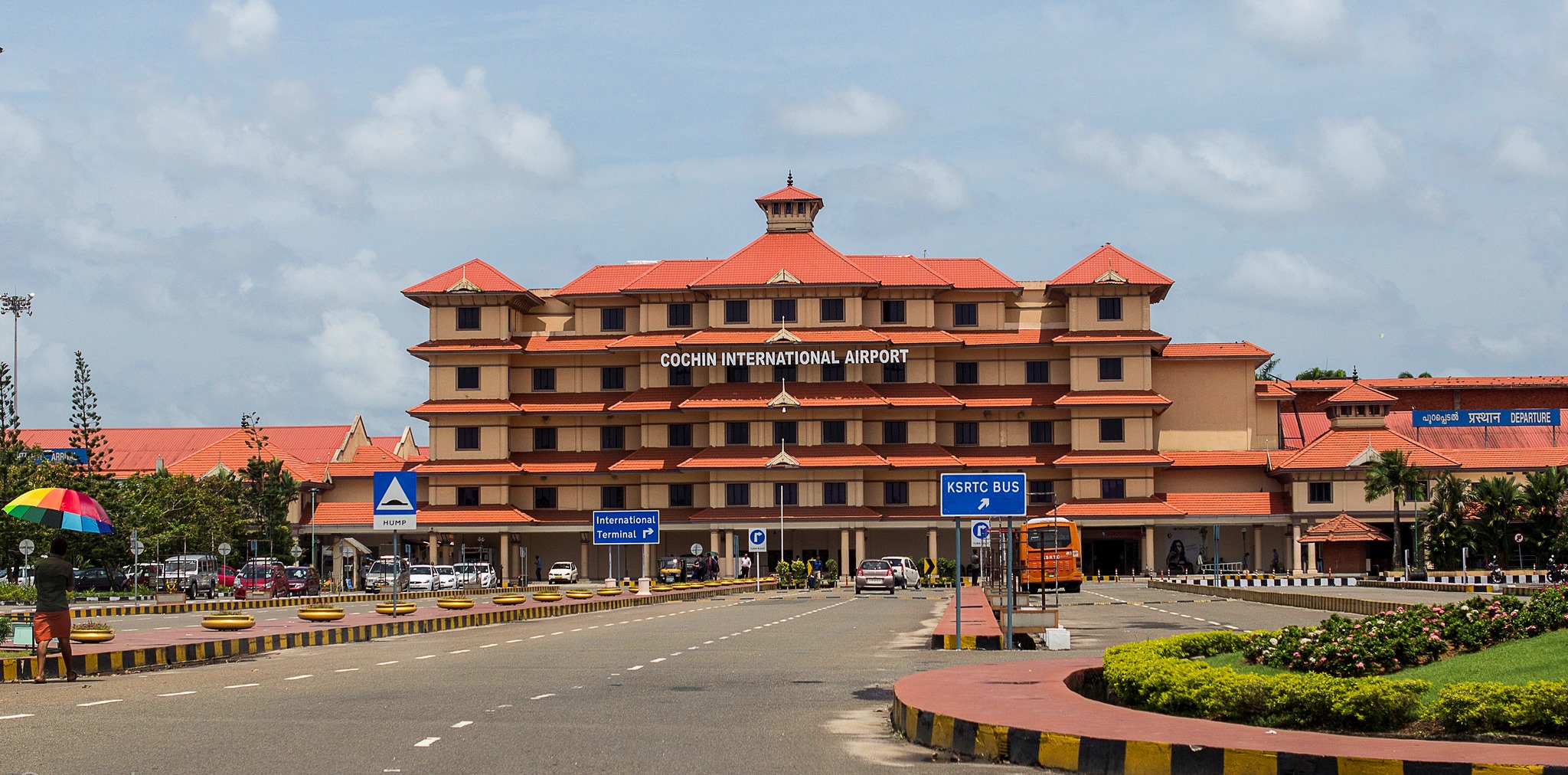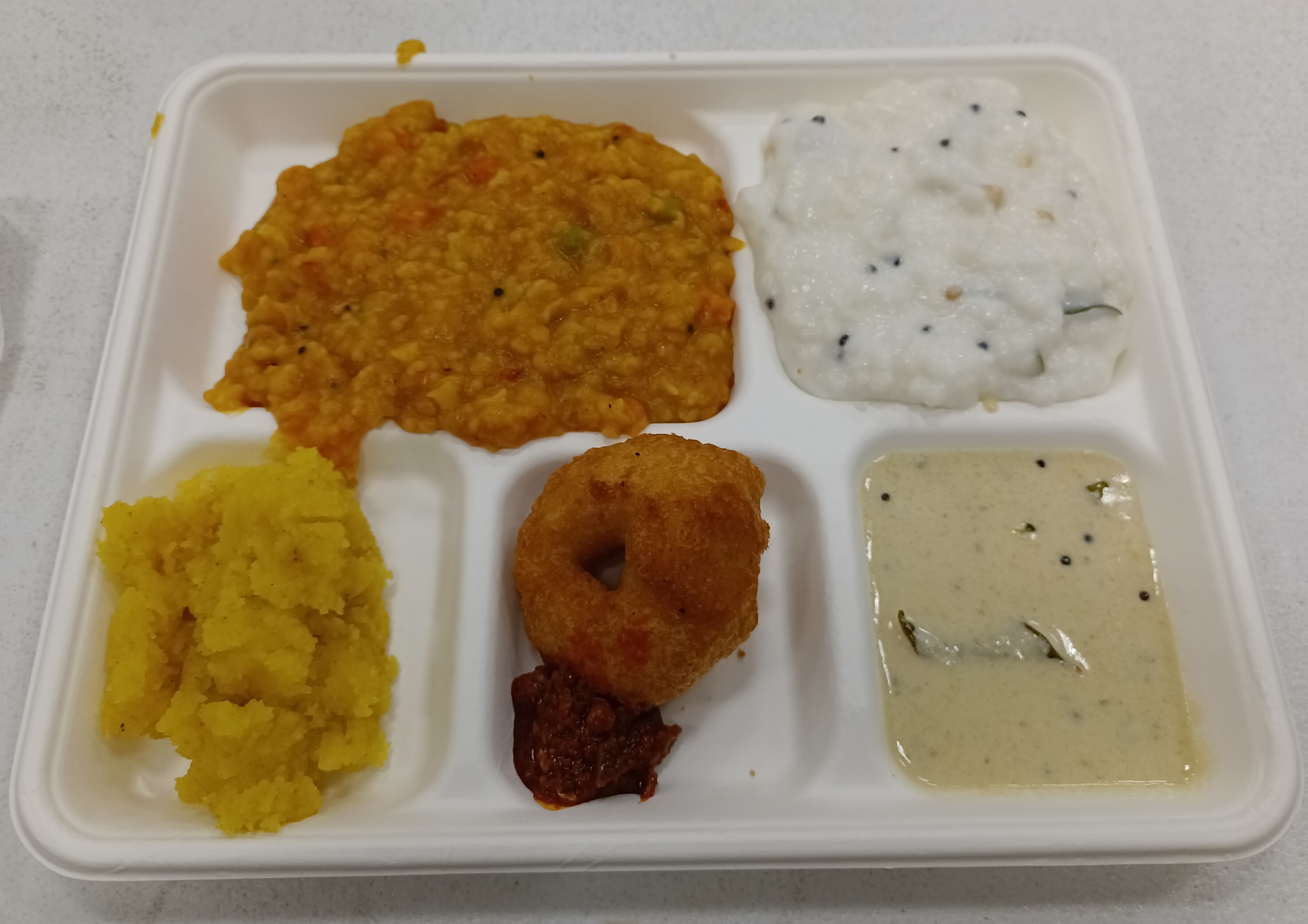|
Devakkoothu
Devakkoothu also spelled as Devakoothu is a ritualistic dance performed in Kerala, India. It is the only theyyam performed by a woman. This theyyam is performed in the temple Tekumpad Koolom Thayakav near Cherukunnu in Kannur district. The goddess associated with Devakkoothu is called Valliyamma because she stayed at a forest of creepers, according to myths. Devakkoothu is performed once in two years. Overview Devakkoothu is a theyyam performed in the temple Tekumpad Koolom Thayakav near Cherukunnu in Kannur district of Kerala. Even the Theyyams of female deities are generally performed by men, Devakkoothu is the only theyyam performed by a woman. The entire performance is based on the narration of the myth related to the goddess who lost in the creepers. Devakkoothu is performed once in two years, on fifth day of Malayalam month of Dhanu (December). Myth One day, while traveling through the Devaloka, a group of goddess saw a place on earth full of beautiful flowers among cr ... [...More Info...] [...Related Items...] OR: [Wikipedia] [Google] [Baidu] |
Theyyam
Theyyam is a Hindu religious ritual practised in the North Malabar Region of Kerala and some parts of Karnataka. Theyyam is a ritual performance involving extended chanting of mantras and ceremonial preparations that typically span 8 to 10 hours. The ritual culminates with the placement of the ''mudi'' (sacred headgear) on the performer, a moment believed to mark the entry of the deity into the performer’s body. As part of the process, the performer consumes ''madhyam'' (toddy), which is believed to suppress personal consciousness, allowing the divine consciousness of the devatha to manifest. This practice aligns with philosophical concepts found in Hindu texts such as the Yoga Vasistha, which describe how divine entities (devatas) can enter the human body, parakāya praveśanam at a Paramanu level. There is no concept of God in Hindusim, rather the concept of Devatha and Brahmam. Hinduism traditionally recognizes a multiplicity of devatas, often cited as 33 crore includin ... [...More Info...] [...Related Items...] OR: [Wikipedia] [Google] [Baidu] |
Kerala
Kerala ( , ) is a States and union territories of India, state on the Malabar Coast of India. It was formed on 1 November 1956, following the passage of the States Reorganisation Act, by combining Malayalam-speaking regions of the erstwhile regions of Kingdom of Cochin, Cochin, Malabar District, Malabar, South Canara, and Travancore. Spread over , Kerala is the 14th List of states and union territories of India by area, smallest Indian state by area. It is bordered by Karnataka to the north and northeast, Tamil Nadu to the east and south, and the Laccadive Sea, Lakshadweep Sea to the west. With 33 million inhabitants as per the 2011 Census of India, 2011 census, Kerala is the List of states of India by population, 13th-largest Indian state by population. It is divided into 14 List of districts of Kerala, districts with the capital being Thiruvananthapuram. Malayalam is the most widely spoken language and is also the official language of the state. The Chera dynasty was the f ... [...More Info...] [...Related Items...] OR: [Wikipedia] [Google] [Baidu] |
Puja (Hinduism)
() is a worship ritual performed by Hindus to offer devotional homage and prayer to one or more deities, to host and honour a guest, or to spiritually celebrate an event. It may honour or celebrate the presence of special guests, or their memories after they die. The word ''puja'' is roughly translated into English as 'reverence, honour, homage, adoration, or worship'.पूजा ''Sanskrit Dictionary'', Germany (2009) ''Puja'' (পুজো / পুজা in Bengali language, Bangla), the loving offering of light, flowers, and water or food to the divine, is the essential ritual of Hinduism. For the worshipper, the divine is visible in the image, and the divinity sees the worshipper. The interaction between human and deity, between human and guru, is called a ''Darshan (Indian re ... [...More Info...] [...Related Items...] OR: [Wikipedia] [Google] [Baidu] |
Kerala Folklore
Kerala ( , ) is a state on the Malabar Coast of India. It was formed on 1 November 1956, following the passage of the States Reorganisation Act, by combining Malayalam-speaking regions of the erstwhile regions of Cochin, Malabar, South Canara, and Travancore. Spread over , Kerala is the 14th smallest Indian state by area. It is bordered by Karnataka to the north and northeast, Tamil Nadu to the east and south, and the Lakshadweep Sea to the west. With 33 million inhabitants as per the 2011 census, Kerala is the 13th-largest Indian state by population. It is divided into 14 districts with the capital being Thiruvananthapuram. Malayalam is the most widely spoken language and is also the official language of the state. The Chera dynasty was the first prominent kingdom based in Kerala. The Ay kingdom in the deep south and the Ezhimala kingdom in the north formed the other kingdoms in the early years of the Common Era (CE). The region had been a prominent spice exporter si ... [...More Info...] [...Related Items...] OR: [Wikipedia] [Google] [Baidu] |
Regional Hindu Goddesses
In geography, regions, otherwise referred to as areas, zones, lands or territories, are portions of the Earth's surface that are broadly divided by physical characteristics (physical geography), human impact characteristics (human geography), and the interaction of humanity and the environment ( environmental geography). Geographic regions and sub-regions are mostly described by their imprecisely defined, and sometimes transitory boundaries, except in human geography, where jurisdiction areas such as national borders are defined in law. More confined or well bounded portions are called ''locations'' or ''places''. Apart from the global continental regions, there are also hydrospheric and atmospheric regions that cover the oceans, and discrete climates above the land and water masses of the planet. The land and water global regions are divided into subregions geographically bounded by large geological features that influence large-scale ecologies, such as plains and features. As a ... [...More Info...] [...Related Items...] OR: [Wikipedia] [Google] [Baidu] |
Dances Of Kerala
Dance is an The arts, art form, consisting of sequences of body movements with aesthetic and often Symbol, symbolic value, either improvised or purposefully selected. Dance can be categorized and described by its choreography, by its repertoire of movements or by its History of dance, historical period or List of ethnic, regional, and folk dances by origin, place of origin. Dance is typically performed with Music, musical accompaniment, and sometimes with the dancer simultaneously using a musical instrument themselves. Two common types of group dance are Concert dance, theatrical and Participation dance, participatory dance. Both types of dance may have special functions, whether social, ceremonial, Competitive dance, competitive, Erotic dance, erotic, War dance, martial, Sacred dance, sacred or Liturgical dance, liturgical. Dance is not solely restricted to performance, as dance is used as a form of exercise and occasionally training for other sports and activities. Dance perf ... [...More Info...] [...Related Items...] OR: [Wikipedia] [Google] [Baidu] |
Ritual Dances
{{Disambiguation ...
Ceremonial dance may refer to: *Sacred dance *Ecstatic dance *Folk dance A folk dance is a dance that reflects the life of the people of a certain country or region. Not all ethnic dances are folk dances. For example, Ritual, ritual dances or dances of ritual origin are not considered to be folk dances. Ritual dances ... [...More Info...] [...Related Items...] OR: [Wikipedia] [Google] [Baidu] |
Hindu Rituals
Samskara (Sanskrit: संस्कार, IAST: , sometimes spelled ''samskara'') are sacraments in Hinduism and other Indian religions, described in ancient Sanskrit texts, as well as a concept in the karma theory of Indian philosophies. The word literally means "putting together, making perfect, getting ready, to prepare", or "a sacred or sanctifying ceremony" in ancient Sanskrit and Pali texts of India. In the context of karma theory, samskaras are dispositions, characters or behavioural traits that exist as default from birth or prepared and perfected by a person over one's lifetime, that exist as imprints on the subconscious according to various schools of Hindu philosophy such as the yoga (philosophy), Yoga school. These perfected or default imprints of karma within a person, influences that person's nature, response and states of mind.Stephen H. Phillips (2009), Yoga, Karma, and Rebirth: A Brief History and Philosophy, Columbia University Press, , Chapter 3 In another ... [...More Info...] [...Related Items...] OR: [Wikipedia] [Google] [Baidu] |
Chirakkal Dynasty
Chirakkal Raja (King of Chirakkal) was the title of the most senior king of the Chirakkal branch, who ruled over the erstwhile feudal state of Kolathunadu, which was located in the modern-day Indian state of Kerala. See also * Arakkal Kingdom * Kannur * Nair * Mysore invasion of Chirakkal The Mysore invasion of Chirakkal took place in 1766. The Kingdom of Mysore defeated and occupied the lands of Kingdom of Chirakkal. Hyder Ali killed the King of Chirakkal and made Cannanore independent for Ali Raja who helped him in the invasion ... References People from Kannur Nair {{India-royal-stub ... [...More Info...] [...Related Items...] OR: [Wikipedia] [Google] [Baidu] |
Prasada
200px, ''Naivedya'' offered to Sri Maya Chandrodaya Mandir in Mayapur, India">Mayapur.html" ;"title="Sri Maya Chandrodaya Mandir, Mayapur">Sri Maya Chandrodaya Mandir in Mayapur">Sri Maya Chandrodaya Mandir, Mayapur">Sri Maya Chandrodaya Mandir in Mayapur, India Prasāda (, Sanskrit: प्रसाद), prasad or prasadam is a religious offering in Hinduism. Most often ''Prasada'' is vegetarian food especially cooked for devotees after praise and thanksgiving to a god. ''Mahaprasada'' (also called ''bhandarā''),Pashaura Singh, Louis E. Fenech, 2014The Oxford Handbook of Sikh Studies/ref> is the consecrated food offered to the deity in a Hindu temple which is then distributed and partaken by all the devotees regardless of any orientation.Chitrita Banerji, 2010Eating India: Exploring the Food and Culture of the Land of SpicesSubhakanta Behera, 2002Construction of an identity discourse: Oriya literature and the Jagannath lovers (1866–1936) pp. 140–177.Susan Pattinson, 2011Th ... [...More Info...] [...Related Items...] OR: [Wikipedia] [Google] [Baidu] |
Ganesha
Ganesha or Ganesh (, , ), also known as Ganapati, Vinayaka and Pillaiyar, is one of the best-known and most worshipped Deva (Hinduism), deities in the Hindu deities, Hindu pantheon and is the Supreme God in the Ganapatya sect. His depictions are found throughout India. Hindu denominations worship him regardless of affiliations. Devotion to Ganesha is widely diffused and extends Ganesha in world religions, to Jains and Buddhists and beyond India. Although Ganesha has many attributes, he is readily identified by his Asiatic Elephant, elephant head and four arms. He is widely revered, more specifically, as the remover of obstacles and bringer of good luck; the patron of The arts, arts and Science, sciences; and the Deva (Hinduism), deva of intellect and wisdom. As the god of beginnings, he is honoured at the start of rites and ceremonies. Ganesha is also invoked during writing sessions as a patron of letters and learning., Vigna means obstacles Nasha means destroy. These ideas ar ... [...More Info...] [...Related Items...] OR: [Wikipedia] [Google] [Baidu] |







